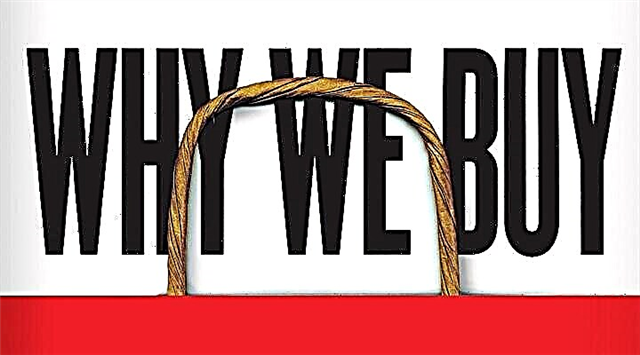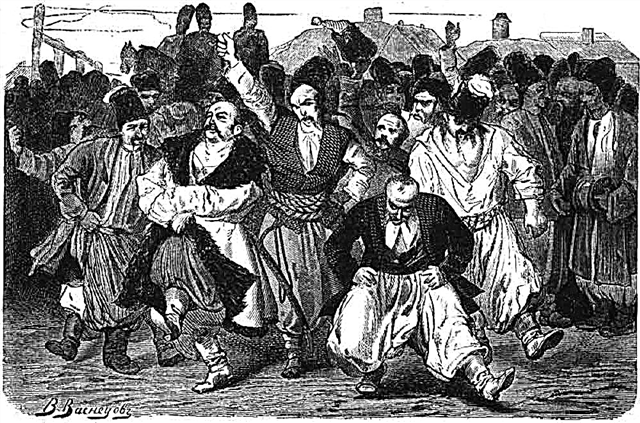Value creation
The task of the one who started the business is to find out what other people lack and find a way to fill this gap. A business will not exist if it cannot offer anything. An enterprise that does not benefit others is called a hobby.
If there are two fields of activity, then it is better to choose where competition exists. This means that there are people willing to pay money for what you intend to offer, and the greatest risk of being left without a market is reduced to zero. Track what your potential competitors are doing, becoming their buyer. Learn all about your competitors and create a product that is better than what they offer.
Most major automakers test their products through obstacle courses. Software development companies such as Microsoft and Google are testing new products on employees' computers before launching them on the mass market.
This form of field testing allows you to identify and eliminate product flaws before the buyer sees it. Using your product is the best way to improve its quality. Become the most active and demanding consumer of your own product, and all other ways to improve your offer will be dimmed before this one.
Anyone who signs up on Facebook brings friends and acquaintances. Anyone who likes a YouTube video shares it with other people. This is called autocatalysis (acceleration). If there is an element of autocatalysis in your business, the business will expand faster than you expect.
Marketing
The goal of marketing is to get you noticed. And the best way to attract attention is extraordinary. If you make your offers unique enough to arouse the curiosity of potential buyers, it will be much easier for you to get their attention.
A great metaphor to illustrate this principle is “The Purple Cow” (based on Seth Godin’s book). When only brown cows graze on the field, it’s boring. The purple cow does not meet people's expectations, and this naturally attracts attention and causes interest.
Marketing is most effective when it focuses on the desired end result. Most car owners buy expensive SUVs not because they often have to drive off the highway. They only buy such cars because they can feel brave adventurers. Most women buy lipstick worth $ 20 per tube, not only because of the color, but because they want to feel beautiful and desirable. You better inform potential customers not about the product’s properties, but about its benefits, that is, what the customer will receive by accepting your offer. Make the consumer conclude: “This is what I need.”
If you want to quickly get someone's attention, share something valuable for free. People love to receive gifts. Offers of something free exist because they work: they encourage people to buy a product or service in the future.
If you want customers to remember who you are and what you offer, you need to attract their attention and hold it for at least a few seconds. A hook is the one and only phrase that describes the main advantage of your proposal. Sometimes the title acts as a hook, sometimes a short slogan. Having invented a hook, immediately start using it! Place it on your website, print it on business cards - in general, make it the first message that catches your eye with your potential customers.
The request to allow continued communication after the provision of a free product affects the development of the business. When you convey some value to people, ask if they mind if you continue to communicate with them. Tell us what they will receive (email or phone call) and what the value of further communication will be for them.
Sales
Reciprocity - this is a strong desire of most people to take a response as a sign of gratitude. However, there is one non-obvious thing: the desire to reciprocate is not always proportional to the volume of the initial gift.
Typically, sellers begin communicating with a potential customer by doing him a small favor, for example, offering a cup of coffee. This may seem like an ordinary politeness gesture. But this is not so. Acceptance of even a small gift creates a psychological need for reciprocity for the buyer, which shifts the situation in favor of the seller. Potential buyers who accept the gift are more likely to buy the product.
Selling, in essence, is a process of identifying and eliminating consumer barriers - manifestations of insecurity that prevent your potential customers from buying what you offer. Your main job as a salesperson is to identify and remove such barriers. In the process of discussing any transaction, standard objections arise:
- It's too expensive. People perceive a fee for something as a loss, and this makes them resist the deal. If the client understands that the value of your offer significantly exceeds the asking price, then this objection can be defeated.
- This will not work. If the buyer thinks that the offer will not be able to provide him with the promised, then he will refuse the purchase. Reviews are able to cope with objections.
- I can wait. The buyer can believe that he has no problems that need to be addressed immediately. The best way to solve the situation is to concentrate on training the client and help him imagine how his situation could be if your proposal were accepted.
People do not like to waste money and take risks. Risk transfer is a strategy in which the risk associated with a transaction is transferred from the buyer to the seller (offer free shipping and returns without any restrictions if the consumer did not like the ordered product). This strategy allows the buyer to get rid of the consumer barrier and increase your sales.
Renewal - This is the process of persuading customers to buy your product again. Renewal is considered a simpler, faster and more effective way to increase business profitability than attracting new customers. Your old customers know you, trust you and understand what value you can provide. Once every 3-6 months, go to the "lost" customers with new offers.
Financial management
Four methods to increase company revenue:
- Increase the number of customers served. More visitors - more orders. Provided that the average check value remains unchanged, you get more money.
- Increase the average size of each transaction (increase the value of the average check). You encourage each client to buy more from you.
- Increase the frequency of transactions per client. You encourage customers to buy more often.
- Rise prices. In this case, you will receive more money from each purchase made by the client - this will allow you to earn more by making the same efforts.
Price power is the ability to raise supply prices over time. If customers are sensitive to the price of your offer, then you will lose a significant part of them when it increases. But there are exceptions, for example, the sale of luxury goods: customers buy them because they are expensive social signals.These products are considered unique precisely because of their high cost.
Raising the price of designer bags, clothing and watches will make them even more desirable. In other words, you can find the perfect solution through experimentation.
Human brain
Fear of loss. The essence of the fear of loss is that people are much more afraid of losing something than gaining something. People believe that it would be nice to have your own business, but the fear of loss (the threat of losing stable work) is stronger than the attractiveness of the opportunity to create your own business.
To overcome the fear of loss, you need to re-interpret this risk and understand that there is nothing to worry about. Casino visitors do this every day. How do casinos encourage people to play games? They distract people from loss. Instead of playing for real money, players receive chips from the casino, and the sense of value disappears. Players lose "fake" money, and the casino gives them "rewards" free drinks, hotel rooms and other things that make it easier to lose.
Contrast. Imagine you need to buy a costume. You go to the store and see that next to the usual costumes for $ 400, costumes for 3000 hang. Nobody buys them, but this is not necessary. Their goal is completely different. Compared to them, suits for $ 400 do not look so expensive (although in a nearby store the same suit costs $ 200).
When presenting your offer, play in contrast: you will increase the chances that potential customers will agree to your offer.
Work on yourself
There are four ways to cope with any task - completion, deletion, transfer and postponement. The completion (completion) of the task is optimal only when you can do it right and efficiently. Removal is applied if the task is not important. Transferring a task to another person is effective if that person can handle it 80% as well as you. Deferral is effective for tasks that do not need to be solved right now.
Projects - These are goals that require more than one action. The larger the project, the more difficult these goals are. To cope with it, focus on only one action that needs to be performed in order to advance towards your goal, and you will definitely be able to implement the entire project.
Priming - This is a method of conscious programming of the brain in order to highlight certain information in the environment. If you tell your mind what exactly interests you, it will warn you every time about the presence of the object you need.
Priming can be used to increase read speed. Before you start reading, determine: why do you want to read this material and what information you want to find in it, scroll through the book, paying special attention to the table of contents, terms and concepts that seemed important to you. Your brain will automatically filter out the background material for you and concentrate on what interests you.
Parkinson's law - the work fills all the time allotted to it. We plan our affairs on the basis of how much time we have on them, and when the deadline draws near, we resort to the preemptive choice in order to be in time.
How to finish a project very quickly? Answer this question - and you will discover various methods or approaches with which to speed up the work. If you break the day into ten-minute segments and spend them to good use, you will be amazed how much can be done.
Bias confirmation. The best way to find out if you are right or wrong is to find information that proves that you are wrong. Confirmation bias is a tendency to pay attention to what supports your conclusions and not to notice that it contradicts them.
It’s unpleasant for us to find out that the decision we made turned out to be wrong, so we tend to filter information.The stronger our belief, the more willingly we ignore the sources of information that call them into question. That is why politicians do not read interviews of their rivals: they already know that they do not coincide in their views, why bother?
Unfortunately, a situation where neither side pays attention to what contradicts its judgments often turns into a crisis. Look for information that is contrary to your hypothesis.
Work with others
Apathy of an outsider. When two people are responsible for the same decision, no one bears responsibility.
Suppose you are busy shopping in a store and the person next to you suddenly becomes ill. If you shout: “Hey somebody, call an ambulance!” - most likely, no one will do this. Each of the store visitors will assume: "Probably someone has already called." It is much more efficient to single out one person in the crowd, make eye contact with him and say very clearly: “YOU - CALL AN AMBULANCE!”. Be sure: a person will do it right away.
The best way to avoid outsider apathy is to make sure that each task has one executor responsible for the implementation, as well as clear deadlines.
Social affirmation. When one person performs a certain action, others perceive it as a social signal and begin to act in the same way. “Viral” videos and bubbles in the stock market gain their strength through social confirmation - if so many people pay attention to them, it’s easy to come to the conclusion: “There is something to it!”
An effective form of social confirmation is feedback. The best reviews are not "great", "best", but "I bought the product and was very pleased with the result."
Principles of effective management:
- Hire small groups of people from competent professionals (the most effective group is 5-8 people) who can provide the desired result quickly and efficiently.
- Clearly state the desired end result for the team members, explain who is personally responsible for what, and do not forget to inform them of how things are going.
- Use the golden three: appreciation, courtesy and respect. This is the best way to make employees feel their own worth.
- Create an environment in which each team member will be able to work with maximum productivity on the best equipment.
- Protect your team from distractions.
- Create an aggressive plan at the end of the project, update it as you move, find the shortest way to complete the work.
- Take measurements to understand how well your work is going.
Systems analysis
If you want to improve the system, focus on key performance indicators. Measure, analyze:
- How fast does a system create a product?
- How many people pay attention to your proposal?
- How many customers agree to buy what you offer?
- How fast do you serve one customer?
- What is the average life value of a client?
- What is the profit margin?
- What is the frequency of product returns or complaints?
- Do you have enough money?
System improvement
In any complex system, the minimum number of input parameters is responsible for a significant part of the result. This template is called the Pareto principle, or 80/20 rule. In many companies, less than 20% of customers provide more than 80% of revenue.
You can notice this principle in various aspects of your life, it takes different forms. For example, less than 1% of films produced annually become blockbusters, and less than 0.1% of books written are bestsellers. Therefore, for best results, focus on a few of the most important factors that lead you to success.
Use this method to identify your best customers.Due to the concentration of efforts precisely on these people and the transfer of relations with everyone else to the “autopilot” mode, you can increase your income and reduce work time.
Self-education related to business or something else never ends. Each new concept that falls into your field of vision represents thousands of opportunities for new discoveries. This is what makes self-education so exciting: there is always something else to learn.
Even money-making artists like Warren Buffett are always eager to learn something new. When Buffett was asked what kind of superpowers he would like to possess, he answered: "I would like to learn to read even faster." Your growth does not and cannot have borders.

 Why do we buy
Why do we buy









